Key takeaways:
- Cryogenic cooking utilizes extremely low temperatures, often through liquid nitrogen, to enhance flavors, textures, and preserve nutrients in food.
- Key benefits include maintaining smooth textures in frozen desserts and vibrant colors in vegetables, leading to a richer eating experience.
- Essential equipment includes a liquid nitrogen tank and a cryo blender, along with necessary safety gear like gloves and goggles.
- Techniques such as flash freezing, cryo emulsification, and cryogenic spherification allow for innovative culinary creations but require careful handling and experimentation.
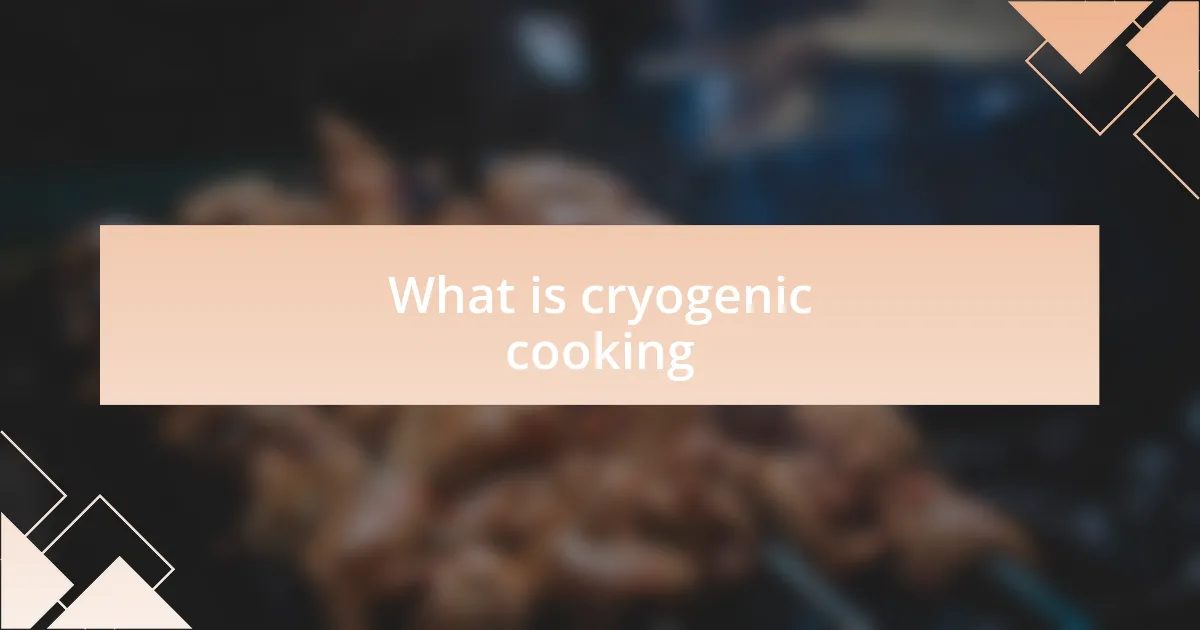
What is cryogenic cooking
Cryogenic cooking is a fascinating culinary technique that involves using extremely low temperatures to prepare food. I remember the first time I encountered it at a modernist cuisine workshop; watching food freeze almost instantaneously was mesmerizing. The process often uses liquid nitrogen, which can chill food to temperatures as low as -196 degrees Celsius, creating unique textures and flavors that simply can’t be achieved through traditional cooking methods.
What struck me most about cryogenic cooking is its ability to transform ordinary ingredients into extraordinary dishes. Have you ever tasted a dish where the most vibrant flavors suddenly exploded in your mouth, leading to an experience that felt almost otherworldly? That’s what happens when you employ these techniques; the rapid freezing process locks in freshness, preserving nutrients and enhancing the taste in ways that are simply delightful.
With cryogenic cooking, the possibilities are endless. I often find myself experimenting with fruits or even dairy, wondering how they might transform under such extreme chill. Each time, I feel a mix of excitement and anxiety—what if it doesn’t work? But when it does, the results can be thrilling, like uncovering a hidden secret within familiar ingredients. This method encourages creativity and exploration in the kitchen, making it a captivating aspect of culinary education.
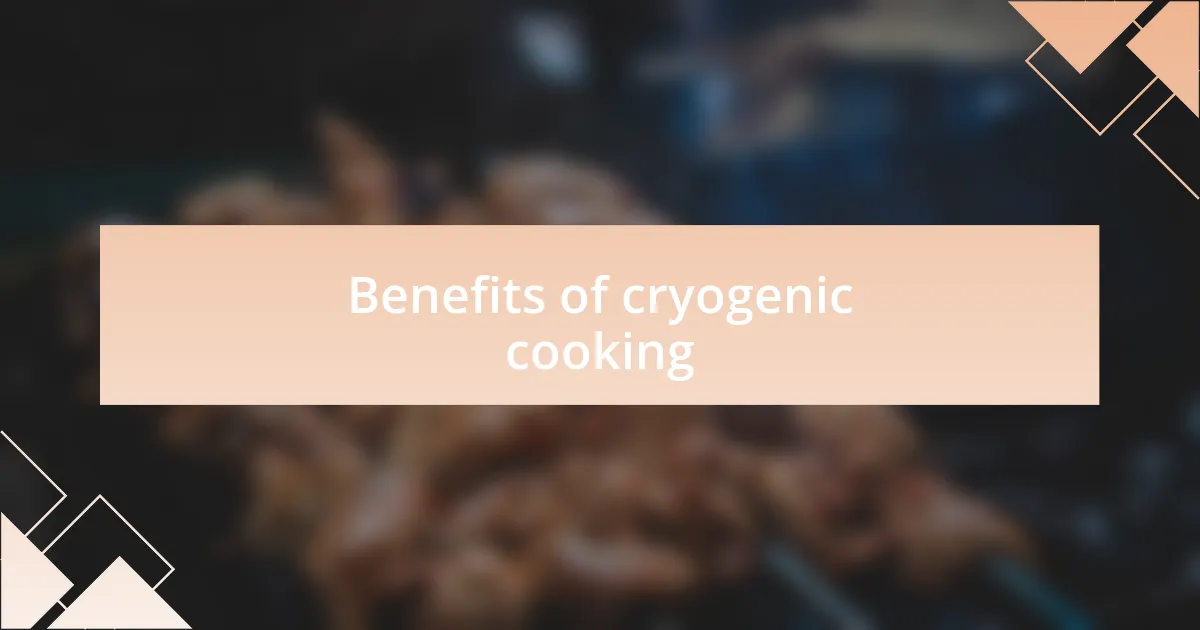
Benefits of cryogenic cooking
One of the foremost benefits of cryogenic cooking is the preservation of flavor and texture. I recall trying a cryogenically frozen sorbet that was bursting with flavor in every bite, unlike anything I’d tasted from traditional methods. The instant freezing process prevents the formation of large ice crystals, which means the texture remains smooth and rich—did you ever wonder why some frozen desserts feel icy? Cryogenic techniques ensure that delightful creaminess is maintained, elevating the overall eating experience.
Another incredible advantage I’ve noticed is the nutritional retention that cryogenic cooking promotes. During one of my culinary experiments, I prepared a salad with various vegetables that had been frozen in liquid nitrogen. To my surprise, not only did the colors remain vibrant, but the crunchiness of the veggies was accentuated too. How many times have you seen nutrients lost in cooking processes or during storage? Cryogenic cooking helps lock in vitamins and color, ensuring that the food is not only visually appealing but also packed with health benefits.
Moreover, this cooking technique fosters endless creativity in the kitchen. I often experiment with combinations that I would have never considered before, like pairing herbs with fruits. Have you ever been inspired to try something completely out of your comfort zone? The thrill of discovery is what keeps me experimenting, as each cryogenic creation feels like a personal adventure—an opportunity to redefine the boundaries of traditional cooking and to delight in unexpected flavors.
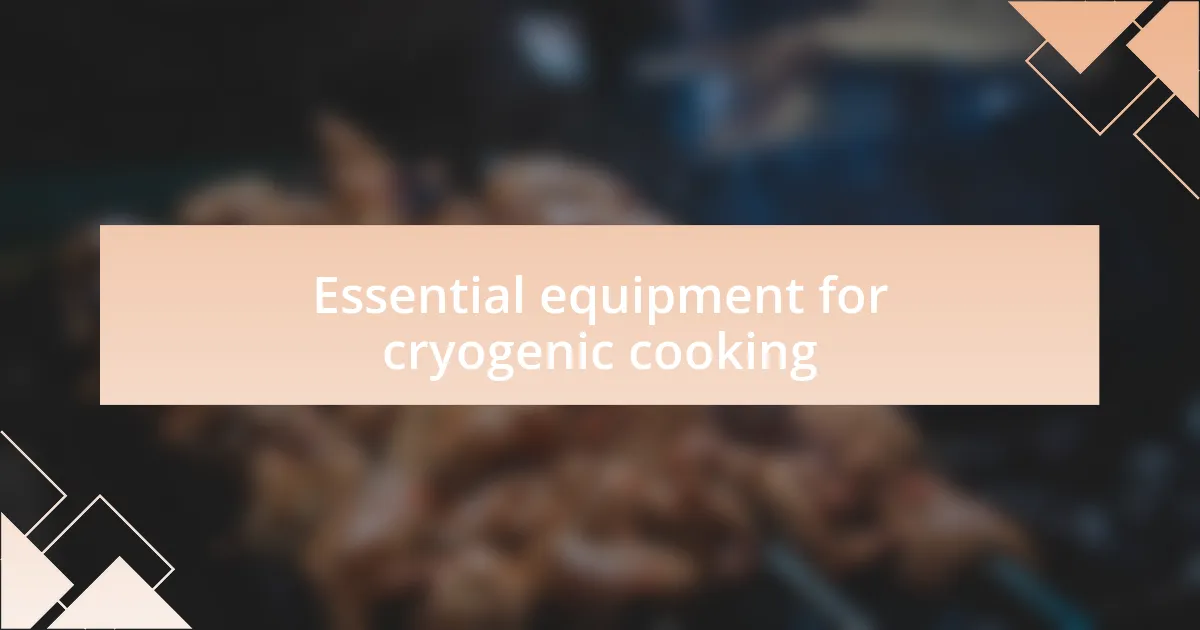
Essential equipment for cryogenic cooking
To start cryogenic cooking, having the right equipment is crucial. My go-to tool is a high-quality liquid nitrogen tank. I remember the first time I worked with it; the immediate chill it provided felt like magic. It allowed me to freeze ingredients in seconds, creating textures that made my dishes stand out. Can you imagine the thrill of watching herbs transform into crispy, flavorful delights right before your eyes?
Another essential piece of equipment is a cryo blender. This tool is fantastic for making sorbets and smoothies with a wonderfully smooth consistency. I was amazed at how effortlessly it combined frozen fruits with liquid nitrogen, producing a blend that was as rich in flavor as it was in texture. Have you ever blended something and felt it didn’t quite reach its full potential? A cryo blender ensures every ingredient shines.
Don’t forget about proper protective gear, like gloves and goggles. Safety should always come first in the kitchen, especially when handling liquid nitrogen. The first time I forgot to wear gloves while scooping out frozen treats, I learned a valuable lesson about safety and respect for the power of this culinary tool. How can we fully enjoy the creative process if we’re not prepared? By equipping ourselves with both the right tools and protective gear, we can confidently explore the remarkable world of cryogenic cooking.
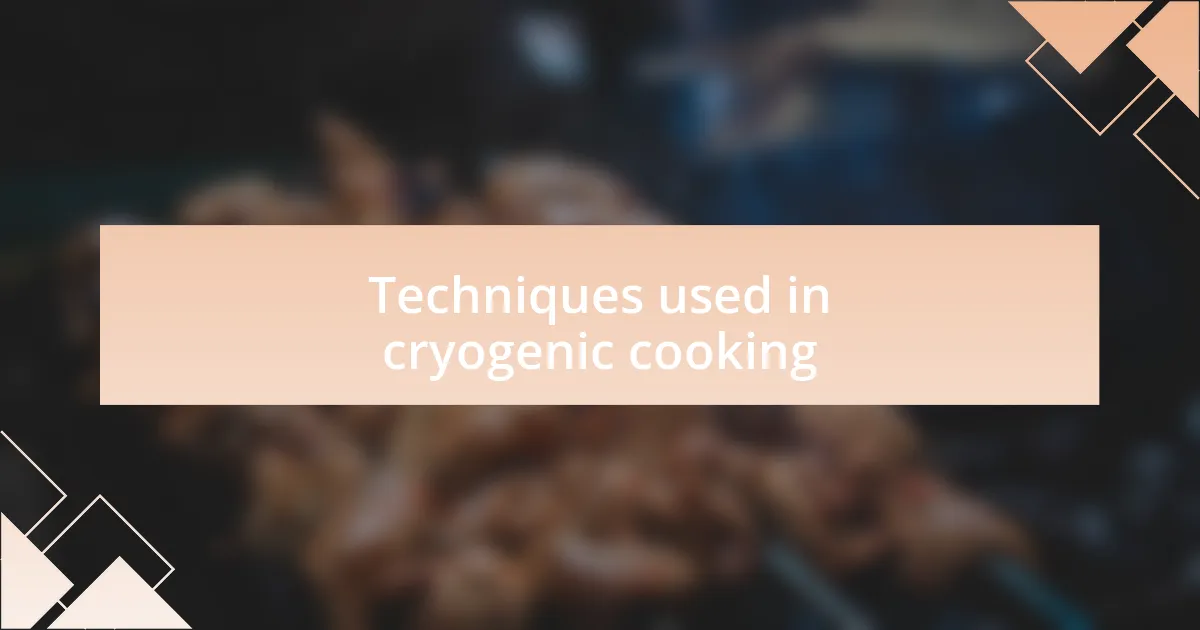
Techniques used in cryogenic cooking
One of the fascinating techniques in cryogenic cooking is flash freezing. It involves rapidly freezing ingredients with liquid nitrogen, creating tiny ice crystals. I vividly remember the first time I flash-froze a delicate piece of fish; the texture was incredible. It was like capturing the essence of the ingredient at its peak freshness. Who knew the temperature could redefine flavor and mouthfeel in such a profound way?
You can also explore cryo emulsification, which combines liquid nitrogen with oils to create unique sauces and dressings. The first time I tried this technique, the resulting emulsified sauce had an ethereal quality that elevated my dish to another level. It’s surprising how a simple chemical reaction can lead to such excitement. Have you ever tasted something and wondered how it could be so unique? This technique holds the key to unlocking those culinary mysteries.
Lastly, my experiences with cryogenic spherification have sparked a new wave of creativity in my cooking. This technique allows you to create edible spheres that burst with flavor. I still remember the delight on my guests’ faces when they popped one of these unexpected flavor bombs in their mouths. It’s moments like these that remind me why I love culinary exploration so much. Isn’t it thrilling to surprise your guests with something they’ve never encountered before?
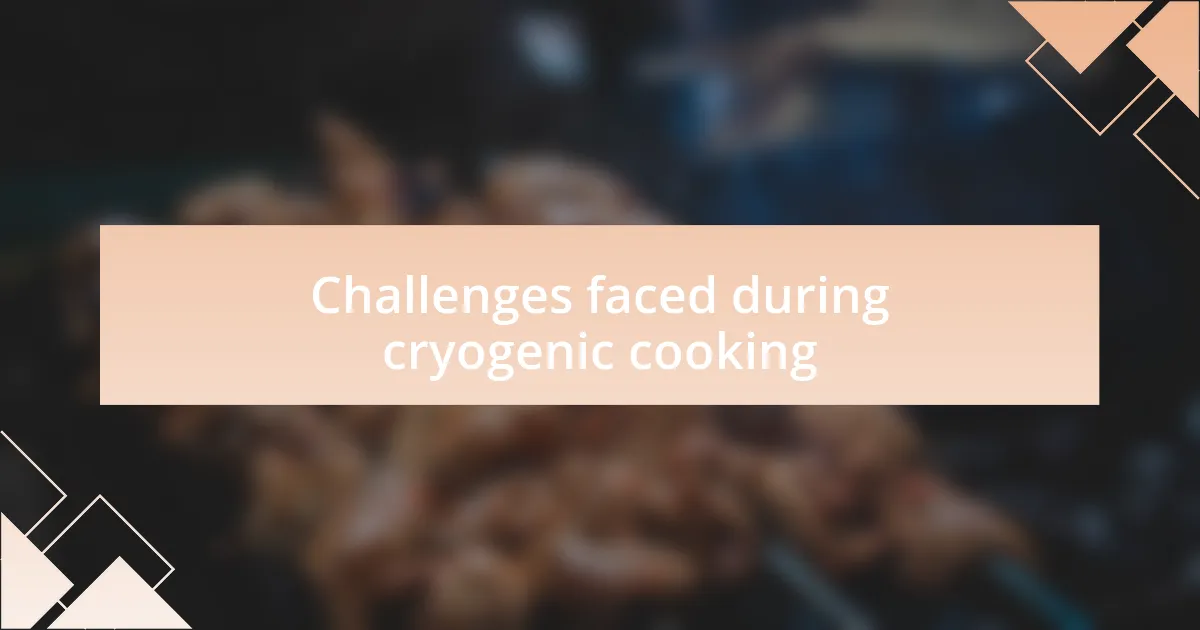
Challenges faced during cryogenic cooking
One significant challenge I faced during cryogenic cooking was the initial fear of handling liquid nitrogen. The first time I used it, I felt a mix of excitement and anxiety. I remember thinking, “What if I accidentally touch it?” The reality is that, while it’s an incredible tool, working with it requires careful attention and respect, highlighting the crucial importance of safety protocols.
Another hurdle is the rapid freezing process itself. While it yields stunning results, it can also catch you off guard when you’re unprepared. I once flash-froze some fruits for a dessert, but I didn’t account for how quickly they would change texture. When I served them, the unexpected crunch was not what I had envisioned. It was a reminder of how cryogenic techniques, while innovative, require trial and error to perfect your approach.
Additionally, determining the right quantities and timing can be tricky. In one instance, I aimed to make a unique ice cream, but I underestimated how much liquid nitrogen would be needed to achieve the desired creaminess. The result was a bit too icy, and I found myself wondering, “How do I balance experimentation with precision?” This balance is crucial in cryogenic cooking, as it can dramatically affect the final dish’s taste and texture.